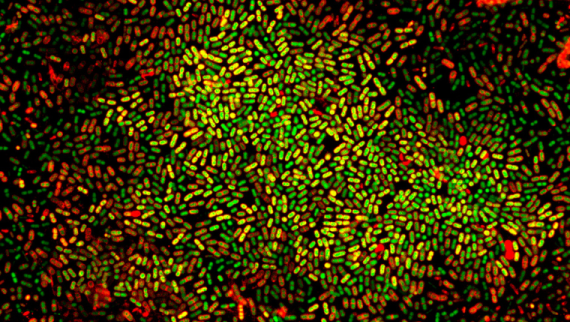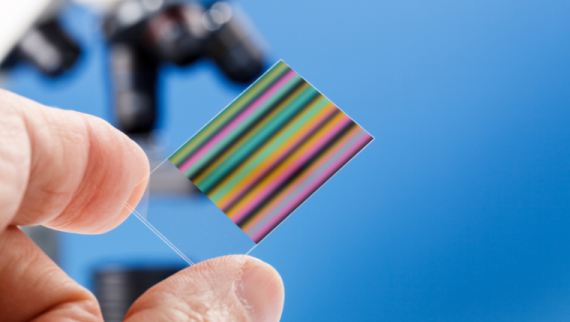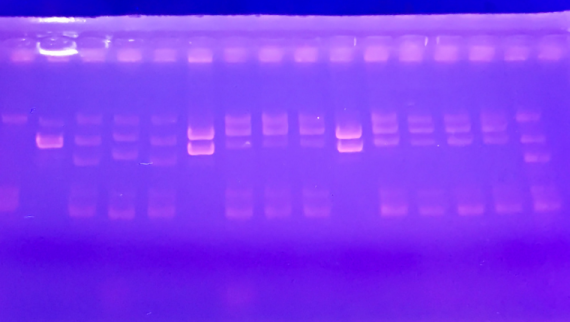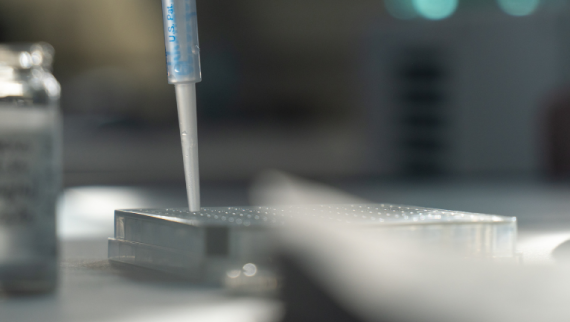Food industry 4.0
Traditional methods of food processing are quickly evolving to integrate the latest advances in information technology, automation and control along entire supply chains and factories, which is known as the Food Industry 4.0 . The idea behind it is to create synergies among all elements along a processing chain, from primary producers to final consumers, based on data and machine learning to drive improvements in productivity, quality and sustainability.
The Institute of Marine Research is contributing to this revolution with its innovative technologies and approaches. Our researchers and technicians currently work on improved sensors & models for production & traceability. By providing real-time data on the status of a process or product, we allow for greater and more flexible control over production. We also add value to these food products and increase their shelf-life.
Furthermore, the IIM works on the development of new environmentally-friendly packaging and smart interactive labeling to better inform all the agents along the food chain. Finally, exploring new technologies and methods for the valorization of waste products fosters a circular economy, which, once again, brings our society closer to fully sustainable development.
A common example of integration along the value chain is traceability. Traceability of raw materials can increase the added value of food products and prevent food fraud. Moreover, traceability of contamination and quality also ensures food safety and increases shelf life for many products. Sensing technologies and modeling contribute greatly to this effort by providing real-time data on the status of a process or product, thus allowing for greater control and flexibility to optimize the production dynamically.
Food industry is also demanding environmentally friendly conservation and packaging systems, with smart and interactive labeling to increase shelf life and respond to consumers demands. Consumers also demand a more responsible and circular food industry. Valorization of by-products from the food processing industry also helps to minimize its environmental impact, as well as to create new value chains.
As you can see, the institute has been accompanying the food industry during this fourth revolution in many different aspects; you can read about all our capabilities and associated services below.
Capabilities
- Software | Model-based design of smart active packaging systems with antimicrobial activity
Matlab code to perform simulations and optimize packaging design using natural antimicrobials (carvacrol) for hake (Merluccius merluccius). In addition, different polymers are considered as possible active packaging materials.
More information here.
- Software | Fish-T-TaB Simulator: Temperature simulator for fish stored in tubs and boxes
This model was developed and applied by members of the EFSA Working Group on the transport/storage of fresh fishery products during the preparatory work on the BIOHAZ Scientific Opinion on the use of "tubs" for transporting and storing fresh fishery products (EFSA-Q-2019-00053). Heat transfer modeling was applied to estimate surface temperature of fish during the temperature-related processes of cooling and subsequently maintaining the chill temperature of the fish (‘cooling’ process) and/or maintaining the chill temperature (‘keeping’ process) for fish kept in ice (in boxes) versus in water and ice (in tubs) under similar transport/storage conditions.
More information here.
- Software | Kinetics of E. coli inactivation by benzalkonium chloride v1.0
This model and associated code was developed to optimize disinfection protocols and minimize bacterial resistance. This model was applied in the following journal article: Optimization of E. coli Inactivation by Benzalkonium Chloride Reveals the Importance of Quantifying the Inoculum Effect on Chemical Disinfection. Front. Microbiol., 26 June 2018. https://doi.org/10.3389/fmicb.2018.01259
More information and access to the code here.
- Software | saCeSS: a parallel global optimization library
The saCeSS library allows solving non-linear programming (NLP) and mixed-integer non-linear programming (MINLP) problems. It also offers efficient local solvers for nonlinear parameter estimation problems associated with complex models (e.g. those described by differential equations).
More information here.
- Software | SYNBADm: a toolbox for automatic optimal design in synthetic biology
SYNBADm is a Matlab-based toolbox for the automatic design of biological circuits with targeted functions from component libraries.
More information here.
Active projects
- LIFE REFISH -
<p>Flexible biorefinery to valorise discards and by-products of the European fish and seafood production (REFISH)</p>
Principal investigator:VázquezÁlvarezXosé AntónFunding body:LIFE Environment (Nature & Circular Economy)Funding for IIM-CSIC:357637€Go to project pageFromto - WASHTOP -
<p>Water Associated Safety Hazards in the Treatment of Produce</p>
Principal investigator:RodríguezGarcíaMíriamFunding body:European Food Safety Authority (EFSA)Funding for IIM-CSIC:80000€Go to project pageFromto 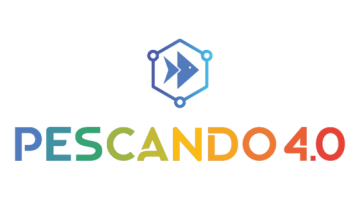 PESCANDO 4.0 -
PESCANDO 4.0 -<p>Plataforma Blockchain e IoT para garantizar la trazabilidad, seguridad, calidad y sostenibilidad en la cadena de valor de los productos pesqueros</p>
Principal investigator:VilasFernándezCarlosFunding body:PROYECTO FINANCIADO POR EL PLAN DE RECUPERACIÓN, TRANSFORMACIÓN Y RESILIENCIA Y LOS FONDOS EUROPEOS NEXT GENERATION EU EN EL MARCO DEL REAL DECRETO 685/2021 DEL 3 DE AGOSTOFunding for IIM-CSIC:145812€Go to project pageFromto- DTWINE2021 -
<p>Digital Twins to optimize energy efficiency and product quality in WINEries</p>
Principal investigator:BalsaCantoEvaFunding body:Proyecto PLEC2021-007827 financiado por MCIN/ AEI /10.13039/501100011033 y por la Unión Europea NextGenerationEU/PRTRFunding for IIM-CSIC:248164€Go to project pageFromto - SEAFOOD-ID -
<p>ANALYTICAL STRATEGIES BASED ON NON-DESTRUCTIVE METHODS AND METAGENOMICS FOR THE CONTROL OF PRODUCTION METHOD AND GEOGRAPHIC ORIGIN</p>
Principal investigator:GonzálezSoteloCarmenPérezMartínRicardo IsaacFunding body:Proyecto PID2020-118012RB-C21 financiado por MCIN/ AEI /10.13039/501100011033Funding for IIM-CSIC:168000€Go to project pageFromto - Contrato Programa -
<p>AYUDA CONVENIO ENTRE CSIC Y LA AXENCIA GALEGA DE INNOVACIÓN -GAIN- PARA EL DESARROLLO DE PROGRAMAS DE I+D+i EN LOS INSTITUTOS DE INVESTIGACIÓN DEL CSIC EN GALICIA Y EN LOS CENTROS OCEANOGRÁFICOS DEL INSTITUTO ESPAÑOL DE OCEANOGRAFÍA (CSIC-IEO). 2021-2022</p>
Principal investigator:SaboridoReyFranFunding body:Agencia Galega de InnovaciónFunding for IIM-CSIC:521824€Go to project pageFromto - ANIBLOCK_ANICHAIN -
<p>Investigación sobre párasitos del pescado, principalmente anisakis y otros.</p>
Principal investigator:GonzálezGonzálezÁngel FranciscoFunding body:MERCADONA SAFunding for IIM-CSIC:41013€Go to project pageFromto - ResiduoZero_2 -
<p>Residuo Zero: Puesta en marcha de una planta piloto par ala transformación y elaboración de nuevos productos procedentes de la transformación de dorada y lubina Culmárex y en los planes de etiquetado de nuevos Productos.</p>
Principal investigator:MedinaMéndezIsabelFunding body:Culmarex S.A.Funding for IIM-CSIC:24705€Go to project pageFromto - BBM -
<p>Biotecnología y Bioprocesos Marinos</p>
Principal investigator:GonzálezSoteloCarmenFunding body:Ayudas cofinanciadas con fondos de la Agencia Gallega de Innovación de la Xunta de GaliciaFunding for IIM-CSIC:75000€Go to project pageFromto - ARMAS -
<p>Estudio, diseño e implementación de estrategias de Análisis de riesgos para fortalecer las seguridad, calidad y calidez del Rape y la Merluza del Atlántico Sudeste frente a parásitos zoonóticos</p>
Principal investigator:GonzálezGonzálezÁngel FranciscoFunding body:Mascato SAFunding for IIM-CSIC:88417€Go to project pageFromto






